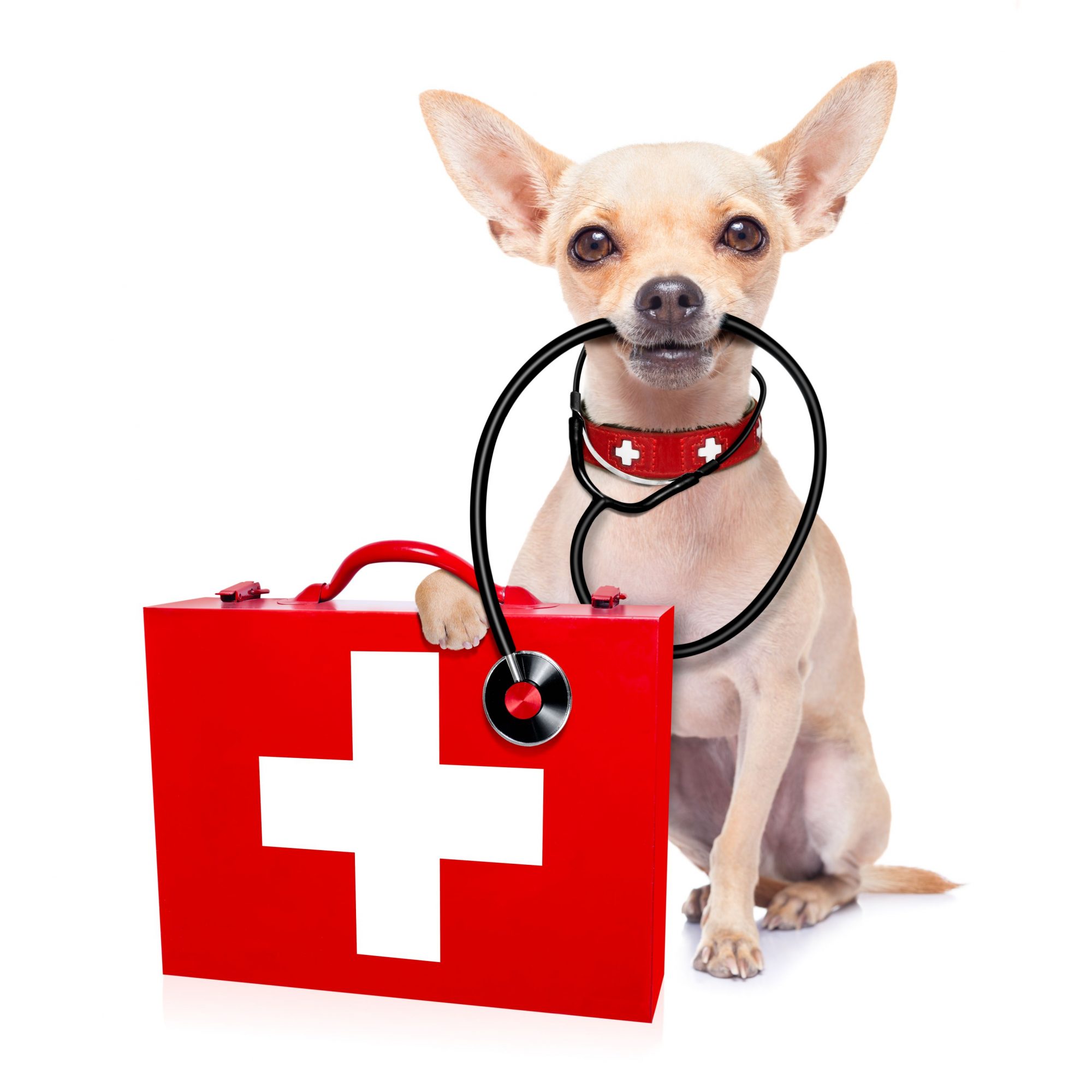Pet Emergency Kit 101

June is National Pet Preparedness Month, a time when we remind pet families of the importance of having an emergency plan in place not just for themselves, but also for their animal companions in the event of a natural or man-made disaster.
When seconds count, you don’t want to forget items vital to your pet’s health and wellbeing. With a little preplanning, you can be prepared to leave quickly and safely with your family pet and minimize further trauma if or when disaster strikes. Read on for tips from our team on being prepared for a pet emergency and assembling an emergency preparedness kit for pets.
Prepare for Possible Separation
In the event of a house fire or other emergency, consider the possibility that you could become separated from your pet. Accurate identification is paramount, since a pet with no identification can be mistaken for a stray. Consider having your pet microchipped (if you haven’t already), and make sure your contact information in the microchip registry is up to date.
Keep Current with Your Pet’s Preventive Care
Make ongoing healthcare a priority, and keep your pet up to date with wellness examinations, vaccines, and parasite prevention. If you need to temporarily relocate or board your pet following a disaster, your pet could be exposed to infectious diseases or fleas and ticks from unprotected pets.
Assembling an Emergency Preparedness Kit for Pets
Preparing a plastic tub stocked with your pet’s basic supplies can save precious time if you have to evacuate your home quickly. Put the container near an exit and let everyone in the family know where it is.
The Humane Society has a helpful guide with tips for assembling a disaster kit that contains some of the following:
- Printed copies of your pet’s current photo, prescriptions, vaccine records, and other important documentation, or keep photos stored on your phone—not on the cloud in case cell service is down.
- Your veterinarian’s name and phone number
- At least 5 days’ worth of food and water per pet and bowls
- Pet carrier
- Prescriptions and supplements (rotate them before they expire)
- Pet first-aid kit
- Extra collar/leash/harness
- Litter box/litter/scoop/plastic bags for disposal
- Toys
- Blanket
- Grooming supplies like combs or dental wipes
Pet First-Aid Kits
An important part of your emergency preparedness kit for pets is a pet first-aid kit. These can be purchased already assembled, but it’s easy to create your own. Try this DIY idea from the ASPCA.
Designate a Safe Place
Knowing where to gather when disaster strikes can give you peace of mind in the immediate aftermath. But you also need to plan ahead for lodging by identifying nearby hotels that accept pets. You can also contact our boarding facility to see if we have space for your pet if you experience an emergency.
At Flowers Mill Veterinary Hospital, our concern for your pets doesn’t stop when you leave our facility. If you would like more tips for being prepared for a pet emergency, contact us today.

